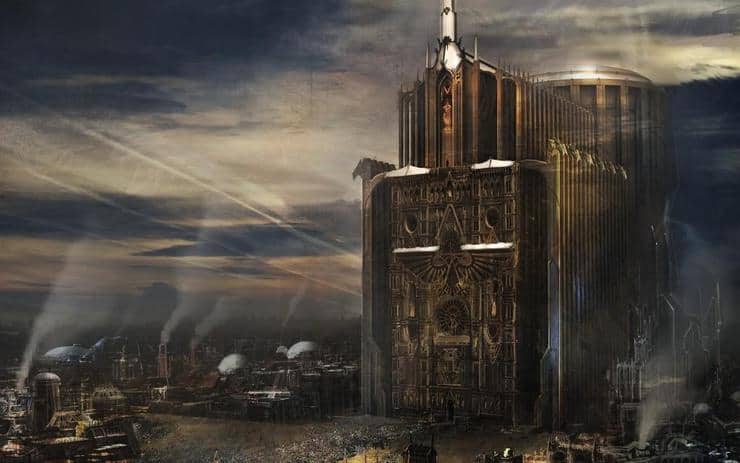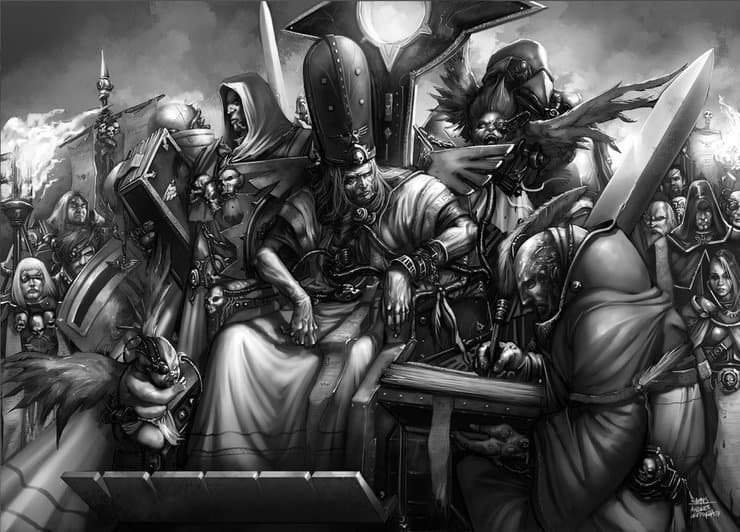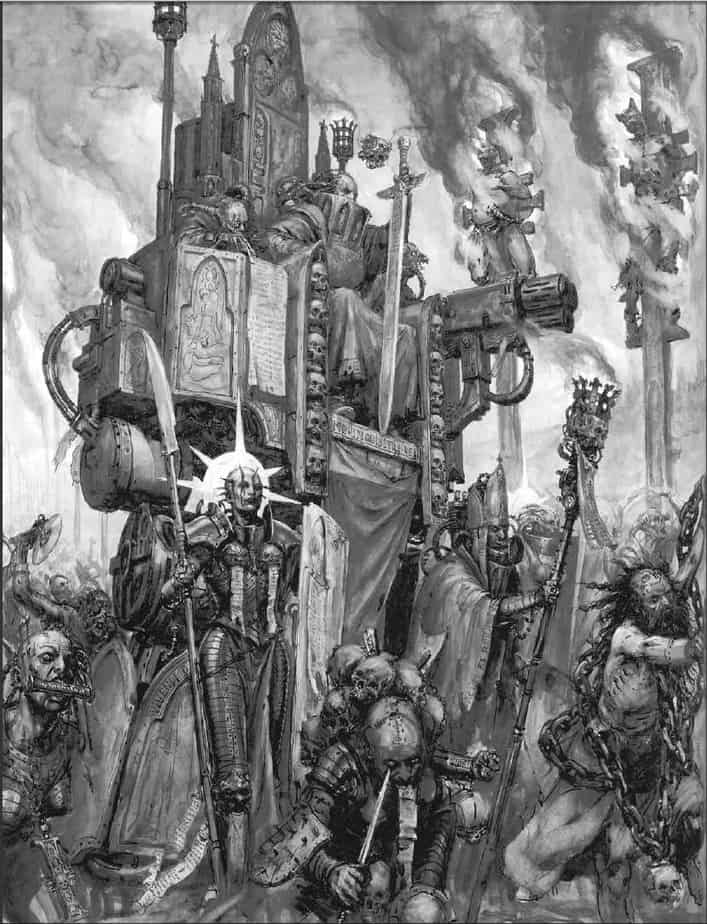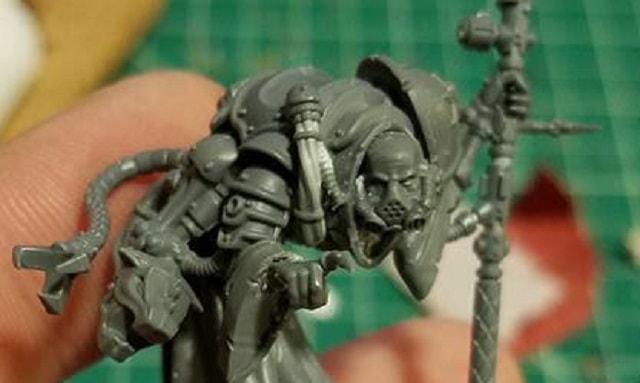The Age of Apostasy was nearly the second Galactic Civil War. Find out what happened, and what led to the creation of the Sisters of Battle.
Via our good friends at Lexicanum
The Ecclesiarchy is the ruler of the Imperial Cult, the bearer of the sacred word of the Emperor. It spread into the lives of every citizen and servant of the Imperium, from the most humble miner and scribe, to the greatest heroes and the most influential officials, including the High Lords of Terra.
The High Lords believing, like every other citizen, that the Ecclesiarchy was speaking for the Emperor, would often follow their words in directing the Imperium.
Though they did not actually speak the words of the Emperor, the Ecclesiarchy did little to retract this image, and soon they were indirectly controlling the fate of the Imperium, influencing legal changes, military deployments and organization, threat priority decision-making and where Imperial resources should be directed, often towards themselves.
Eventually, the power of the Ecclesiarchy grew too much and the Fabricator-General of the Adeptus Mechanicus, along with a group of Space Marine Chapter Masters rallied together, and eventually the Administratum joined, to fight against the strength, will and control of the Ecclesiarchy.
The Administratum, often thought of as the centre of the Imperium, was angered at its loss of power. This began a feud that lasted for at least 7,000 years, has continued to the present day, and is likely to continue far into the future.
The Administratum began to use its position to undermine the power of the Ecclesiarchy. They could influence voting and position its own loyal followers in other departments. From M34 to M35, the power of the Ecclesiarchy waned and, following the election of a series of weak Ecclesiarchs, the Administratum managed to wrestle back control of the Imperium.
They continued to gain power at the expense of the Ecclesiarchy, although allowing them to keep their external image as dictating the words of the Emperor and ruling the Imperium, while the Administratum actually had the power.
In a desperate attempt to escape the iron grip of the Administratum, the entire Ecclesiarchy was moved from Terra to Ophelia VII in the Segmentum Tempestus. The Ecclesiarch at the time was Benedin IV and he moved here for two reasons: it was his diocese when he was a Cardinal, and it was probably the wealthiest planet in the Imperium, after Mars and Terra.
The magnificent Ecclesiarchal Palaces on Ophelia covered 90,000 square miles of surface and soared 4,000 miles into the sky, rivalled only by the palaces on Terra. As they were separated from the Administratum by sheer distance, the power of the Ecclesiarchy grew again and they raised huge tithes to pay for massive works commissioned by Cardinals across the galaxy, a breakneck competition to build the greatest monuments.
Also, purges of heretical cults increased significantly, and any resistance to the Ecclesiarchy was viciously put down.
The Ecclesiarchy also began to form its own armies and naval fleets. These forces became known as the Frateris Templars, and they contained fleets of commercial transports and warships, and armies which rivalled the Imperial Guard in strength. As the Ecclesiarchy rebuilt its power base on Ophelia, the monuments on Terra withered and crumbled.
Nearly three hundred years after the Ecclesiarchy left Terra, Greigor XI was elected Ecclesiarch and one of his first commandments was to move the Ecclesiarchy back to Terra again. None could dissuade him, as he thought the home of the Imperial Cult should be at the Emperor’s side.
It took twelve years to bring about the move, but the doors to the Ecclesiarchal Palaces on Terra were finally opened again. The move stretched the funds of the Ecclesiarchy, and the refurbishment of the palaces did so even further. The Ecclesiarchy was forced to raise tithes again to pay for it all.
Greigor also put forward radical changes in the Ecclesiarchy, although he died of food poisoning before he could implement them. Millions walked past his coffin and tears were shed, but no sooner was Greigor dead and buried than a new, more conservative Ecclesiarch was elected.
Despite Greigor’s ideals, the Ecclesiarchy was very resistant to change and had an internal mechanism for allowing Ecclesiarchs to do as they desired.
The stage is now set for The Age of Apostasy…








